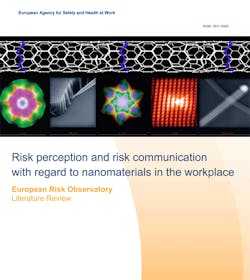Nanomaterials, which measure one-billionth of a meter, can be used in biomedical applications, molecular switches, solar cells, textiles, electronics, sunscreen, paints, food, cosmetics, health and fitness products and more. EU-OSHA pointed out that nanomaterials are used in these products even though “health and environmental hazards have been demonstrated for some manufactured nanomaterials.”
Furthermore, EU-OSHA estimated that 300,000 to 400,000 jobs in the EU currently deal directly with nanotechnology and manufactured nanomaterials.
“The potential for human exposure depends on the way the nanomaterial is being used and is likely to be greater for ‘free’ nanomaterials for example being handled in powder form in the workplace and potentially becoming airborne, than for nanomaterials embedded in a structure or product,” the report stated. “However, even when nanomaterials are embedded, exposure may occur in certain conditions, for example in workplaces where the products are further handled and processed (for example ground or polished) or at the end of a material or product’s life, during disposal, potentially again presenting hazards to waste and recycling workers.”
Communicating the Risks
In its review of current research on the subject, EU-OSHA found that communication of the potential risks posed by such materials is still poor, with a majority of Europeans (54 percent), not even knowing what nanotechnology is.
Even in workplaces where manufactured nanomaterials are found, the level of awareness is low. For example, 75 percent of workers and employers in construction are not aware they work with them.
The report concluded that “policy makers interested in risk communication for nanomaterials workers should adopt existing, successfully tried and tested processes, gaining an understanding of the nature of their audience, their values and concerns, and learning from previous initiatives as evaluation of them is published. Their participation and visibility in public debates and dialogues are also important for engendering trust and openness, and building confidence in this new technology.”
The report, “Risk Perception and Risk Communication with Regard to Nanomaterials in the Workplace,” can be downloaded as a PDF.

